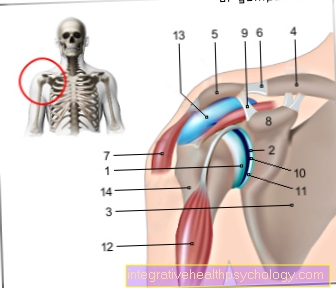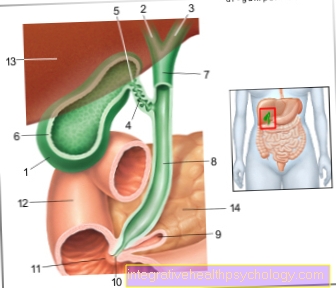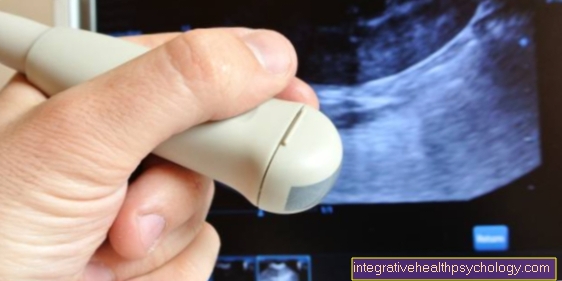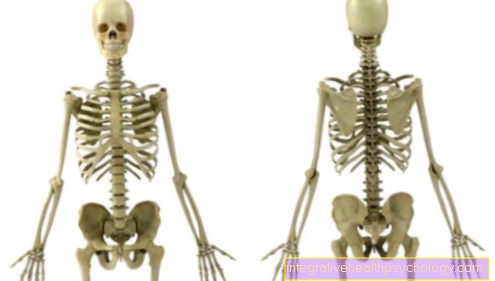The brackets of braces
Definition of brackets
Brackets are special holding elements of orthodontic fixed appliances to which the wire is attached in order to move individual teeth or groups of teeth in a targeted manner.
The brackets are made of different materials and they will adhesive attached, i.e. they are firmly attached to the tooth surfaces with a dental adhesive. Brackets can be attached to the outside of the teeth or almost invisible on the back of the teeth.
The functional principle of the brackets is based on the integrated locks into which the orthodontic wire can be inserted and tightened. For the duration of the orthodontic treatment, the retaining elements remain on the teeth, which can take a period of one to several years.

What do you need brackets for?
Brackets are there to set teeth slowly and specifically in motion if they are crooked and prevent a normal bite position. With the help of the brackets, force can be exerted on the teeth in a targeted manner in order to move them precisely and within a calculable time frame into a predetermined position.
The brackets are used as fixed appliance elements in orthodontics when removable braces do not sufficiently shift the teeth. Furthermore, the brackets are used in adults, because there it is more difficult to move the teeth after the growth is complete and a removable appliance would not be successful here.
Read more about this under: Braces for adults
With brackets, tooth gaps can be closed and also created if, for example, there is not enough space for an implant. In this case, orthodontics is closely linked to surgery. Fixed appliances can also be combined with implants in the palate to pull teeth out of the jaw and put them in position that are misaligned in the jaw.
What are braces rubbers?
With dental brace rubbers a distinction is made between fastening elements, the Alastics, and motion elements, the Elastics.
Alastics serve to anchor the wire in the lock of the (Edgewise) bracket. So they sit directly around the bracket and serve as what is known as a fastening ligature and are particularly popular with children because of their color variability.
However, since the rubber wears out due to the constant force and tension exerted by the wire, it must be replaced with new ones at regular intervals. The time frame is around two to three months.
As an alternative to the Alastics, there are wire ligatures which, due to the material, are much more durable and resistant than the braces rubbers. However, because they are metallic colors, they are therefore not very popular for aesthetic reasons.
Elastics are rubbers that are used to move the teeth in a targeted manner. To do this, the brackets of the teeth that are to be moved are provided with small hooks in which these rubbers can be hung. For example, they are stretched from the upper to the lower jaw.
To do this, the orthodontist gives the patient instructions on how to hang the rubbers. As a rule, these gums have to be replaced several times a day, depending on their strength, and some of them have to be taken out to eat. In contrast to the allastics, elastics are heavily dependent on the cooperation of the patient.
Also read our main article on: Braces rubbers
What materials are brackets made of?
Brackets can be made from a wide variety of materials. In addition to the standard brackets, which are included in the checkout service and are made of stainless steel, other materials are also used. Brackets are also made of gold, titanium, plastic and the popular ceramics, which also offer a high aesthetic standard.
However, since these brackets are more complex to manufacture, they are purely private services and must be paid for with a higher personal contribution. Especially with the Lingual technique, in which the brackets are attached to the back surfaces of the teeth, the costs for these are very high because they are individual and only fit that patient. These brackets are primarily made of gold or ceramic.
Find out more about the topic here: Braces behind the teeth
What colors are there?
The color of the brackets varies between metallic, golden or transparent colors, which differ based on the material.
The wires that are anchored in the brackets are always metallic colors. There are newly developed wire models that are painted in almost transparent, but studies have shown that they are not as stable and successful. Furthermore, the paint peeled off after a short time, so that the silver metal came to light.
The ligatures with rubber rings in the brackets that are used to secure the wire in the Edgewise brackets can be colored. These rubbers are available in all colors and are therefore particularly popular with children.
Are there clear brackets?
There are almost transparent brackets made of ceramic, which look so natural because they are made to match your own tooth color and are therefore barely visible. Since ceramic as a material is highly aesthetic and allows many light reflections, brackets that fit perfectly with each other can be manufactured. These highly aesthetic brackets must, however, also be paid for with a private share for the effort. However, their removal is more difficult than that of the standard brackets.
What can I do about pain caused by brackets?
Pain with fixed appliances caused by brackets can occur quickly - especially when a new wire is inserted or force is applied to the teeth for the first time. If the pain does not decrease after a few days or if it disappears completely, the treating orthodontist should be consulted, who can provide relief in most cases.
The person affected can try to cool the painful areas on their own. For example, you can put cold water in your mouth to relieve the pain.
In the beginning, teeth should be spared by avoiding hard foods for a few days.
In general: After inserting the brackets or with a new wire, the pain is completely normal and subsides. The teeth get used to the force that acts on them in order to be able to move them in the jaw.
You might also be interested in this article: Pain from braces - what to do?
Home remedies or homeopathic remedies can also relieve symptoms.
What do brackets cost?
Braces can quickly take up a range of several thousand euros, unless the health insurance benefits are desired. If the health insurance company pays for the treatment, it will pay for the standard brackets with steel arches. The health insurance only takes on one type, which is also quite large. These brackets are therefore undesirable for many patients.
However, the special requests are more expensive than the standard supply. Flatter, smaller brackets with rubbers or self-alloying without fastening are more expensive, also other materials like Ceramics or gold Cost more.
Furthermore, brackets that are glued to the tongue and palate (lingual technique) also cost considerably more.
For adults, the brackets are a purely private service, as the health insurance does not co-finance any part.
For example, the own contribution to the total treatment for brackets for children is 100-500 euros, while adults have to pay 3000-6000 euros for brackets.
There are also exceptions if e.g. there is a severe malalignment and this can only be corrected by orthodontic surgery.
Read on here: Jaw misalignment
What to do if a bracket comes off / is loose?
If the brackets are loosened or loose, the treating orthodontist should be consulted immediately in order to reposition and reattach them. Otherwise there is a risk that the tooth will move in the wrong direction or that bacteria will collect under the loose bracket and cause tooth decay without being noticed.
In this way, caries can spread and permanently damage the tooth without the person concerned seeing it. Unauthorized removal of the loose bracket is also not advisable, as the risk of injury is far too high if it is not handled properly.
Can you remove brackets yourself?
Brackets cannot be removed by yourself as they come with a Adhesive technology were attached. The teeth were pre-treated with a special dental adhesive and bonded to the bracket with a liquid plastic. This association is very strong and it is not possible for a layperson to solve it without special specialist tools.
Since attempting to remove them can endanger the teeth or soft tissue from slipping, you should not try to remove brackets yourself. In addition to the increased risk of injury, there is also a high risk of leaving plastic residues on the tooth during self-removal, which are sharp-edged and damage the soft tissue.
Furthermore, the teeth are treated after removal so that the areas under the brackets are fully resilient and functional after removal. The corresponding areas are polished and fluoridated. This follow-up treatment cannot be guaranteed at home either.
You can find more information here: Fluoridation of teeth
What types of brackets are there?
Brackets are optimized for the various action goals, which is why there are different types. The standard bracket or also Twin bracket has two wings, while there are also variants that have only one wing. These are known as Single brackets.
In addition to the shape and shape of the bracket, another aspect of the difference is the shape of the lock in which the wire is anchored. There are Edgewise - brackets, Light - Wire - Brackets and self-ligating Brackets. This differentiation criterion indicates how the wire is fastened in the lock, whether it is closed with a wire ligation made of thin wire or a pin, as is the case with Edgewise and LightWire, or does not require any fastening, as with the self-ligating brackets.
The lock of the brackets can vary not only in shape, but also in size. Different sized locks can anchor wires of different thicknesses, depending on the force to be exerted on the teeth.
Furthermore, the brackets can be made according to their materials Ceramics, plastic or Metals like for example gold be divided.



.jpg)





.jpg)



















